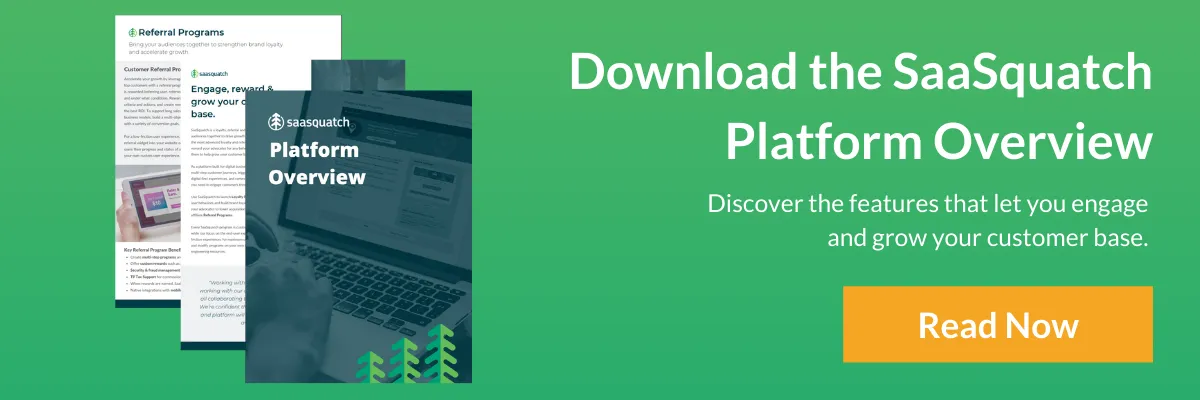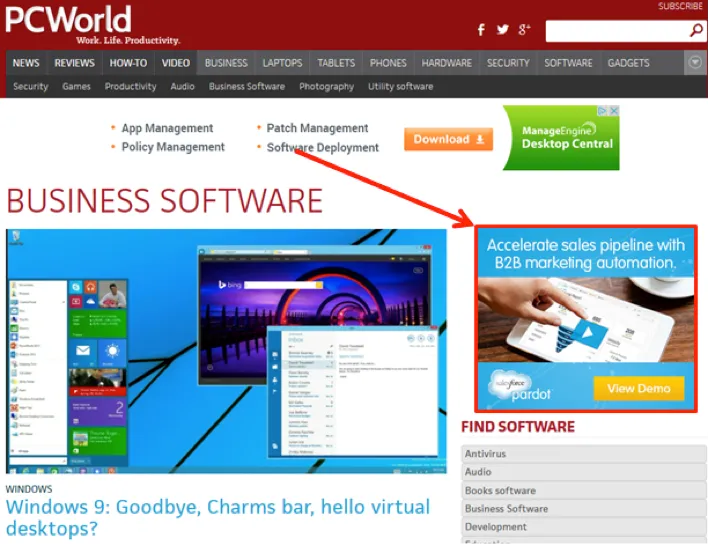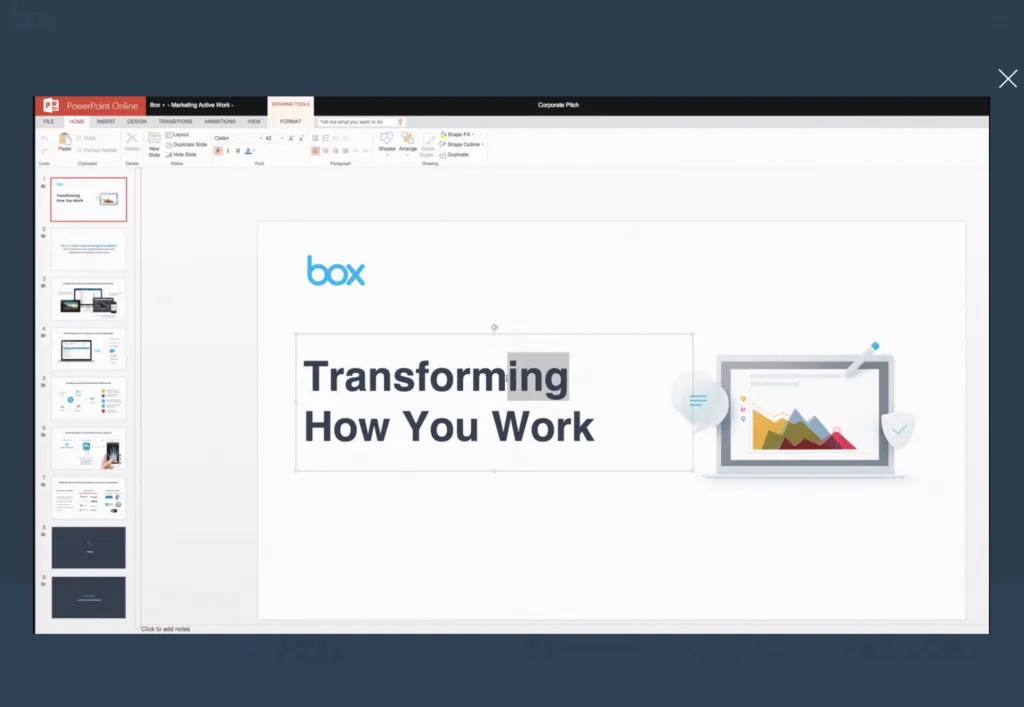The Ultimate Demand Generation Guide (with Strategies and Examples)
Flashback: it’s 1989. Dusk is falling and an Iowa farmer is staring out over his fields, reflecting upon his situation. It all seems normal until … he starts hearing voices.
“If you build it, they will come.”
Yes, I’m recalling the pivotal scene from the hit movie “Field of Dreams.” So, what does Kevin Costner have to do with a demand generation strategy?
You’re correct, not a damn thing. However, those angels in the outfield perfectly captured the heart of most B2B leadership. We think that if we create something of value the product will sell itself again and again.
Those of us working in demand generation know that’s the furthest thing from the truth. Building products is only half of the battle, B2B companies need to invest in demand generation programs to reliably attract and introduce a qualified audience to your offering.
And if you knock your demand generation strategy out of the park, the ghosts of baseball legends might even opt into your pipeline.
Demand generation is, well, to generate demand for your product or service in order to drive more business. Some confuse this with lead generation, the strategy for initiating consumer interest or inquiry into your business.
Both marketing strategies go together and often overlap. For example, sponsored research will both create demand and leads. Therefore, it’s a part of both strategies.
A demand generation strategy in 2017 is what a brand does to get attention and why consumers engage while having not yet tried the product or service. Lead generation is the second half of this situation and is concerned with how a brand capitalizes upon this worthy attention.
Read on to learn how to craft a comprehensive demand generation strategy. First, we’ll look at key metrics for defining success. Next, we’ll examine key tactics with examples from leading companies like Pardot, Salesforce, Hubspot and more.
By the end, you’ll be confident in your ability to create a variety of effective demand generation campaigns across a multichannel strategy.
Grab your mitt and let’s play ball!
When marketers set out to create demand generation strategies, a broad perspective is required. This is because demand generation requires a certain (often overlooked) degree of cooperation between the sales and marketing departments.
As a data-driven process, the best demand generation tactics locate and nurture key prospects over the long term -from both sides of the cycle- engaging them through multiple platforms and touchpoints.
This post is going to look at how B2B marketers can create a comprehensive demand generation strategy. We’ll break down every phase of the demand generation funnel, with an emphasis on optimization and sales creation.
This means specific touchpoint tactics such as:
- Lead scoring
- Display re-targeting
- Sponsored research
- Partner webinars
Using successful SaaS companies as examples, we’ll dive into the best practices of an effective B2B demand generation strategy.
What is a Demand Generation Strategy?
Hubspot defines it nicely:
“Demand generation is the marketing system and engine that bridges the gap with your company’s sales and revenue operations. It may include multiple touch points, from blogging, to email list creation, to social media promotion -- all inbound marketing tactics that are part of a company’s overall demand generation strategy.”
However, demand generation is not inbound marketing.Demand generation strategies will certainly use inbound marketing, but it is but a single piece to your company's larger demand funnel.
On that same note, it isn’t lead generation either. While some businesses are indiscriminate about leads, demand generation is about identifying potential prospects. With nurturing processes, you’ll bring only the best-qualified leads to the sales department. This is about facilitating higher conversion rates and more sales.
Demand generation is:
- A sponsored white paper
- A weekly newsletter
- A meetup event
- A company-sponsored webinar.
It is not a quick fix in the form of a cold email blast or banner ads.
Essentially, your best demand generation strategy will find and target the best touchpoints to engage customers with. In this way, strong demand can be manufactured for new or existing prospects and clients.
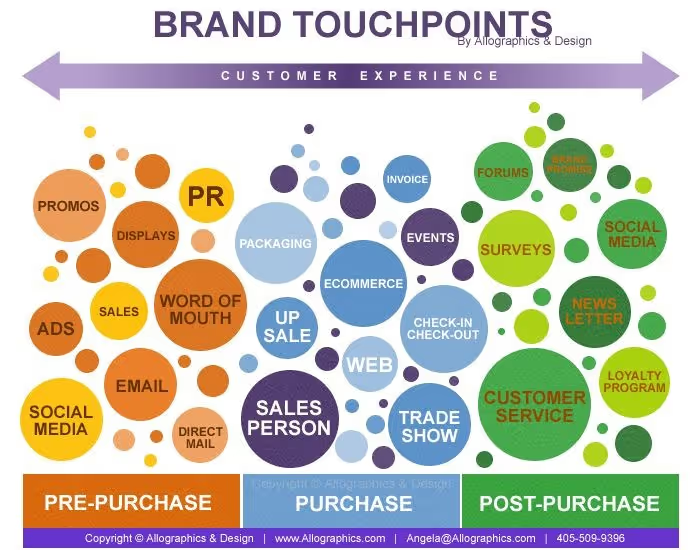
(Source)
23 Experts reveal the biggest mistakes they've made when running demand generation campaigns

Blaine Bertsch
As a young business, we often feel like we're "drinking water from a fire hose."
For a small team, taking in all of the data available and using it to inform our demand generation campaigns can be daunting. It can feel more comfortable to just try and increase the number of leads overall with the belief that the customers hidden away in the crowd will drop to the bottom of the funnel and purchase.
Aggressively narrowing our segments and qualifying prospects at every stage of the funnel can be an uncomfortable step.
Personally, I felt like doing this meant that we would be cutting out customers before they even had a chance to find out about us
- Failure to narrow and clearly identify segments
- Failure to customize content and experience for segments
- Failure to properly qualify prospects
Taking the leap to narrow our focus on key segments, moving leads into more personalized content and onboarding funnels, and nurturing them along the journey has not only paid dividends by bringing us customers, improving conversion rates and increasing our efficiency, it has and continues to bring a wealth of data that paves the way for continued refinement on our campaigns.
The success we've had to date in narrowing our focus and increasing our personalization at every step is almost addictive. Those first 'wins' lead us to more refinement of our campaigns and, most importantly, an ongoing process for continuing to improve our demand generation campaigns.

Alex Jumasev
Sponsoring a conference. Even if the conference is for your target audience, people are still too busy learning new interesting stuff, they don't pay attention to your sponsors. Maybe it works if you sponsor the event for 3-4 years in a row, but a 1-time thing won't be effective.
Inbound marketing always beats "outbound" aka "interruption" marketing. Sponsoring a conference (print advertising, a TV ad) is - unfortunately - outbound.
Not getting personal. Personalized experience converts 1.5 times better.
Example: show different landing pages to different segments of your audience. Another example: send email campaigns that are tightly bound to people's actions in your app. Have they tried feature X? Send them Email X. Have they tried feature Y? Send them email Y.
Before misjudging a marketing channel as "non-converting" try segmenting your audience and personalizing the funnel a little bit.

Sarah Khogyani

Mike Cheng

Ben Bradley

Brian Hansford
Over 25 years I have learned many important lessons from campaign mistakes, and I have learned from other’s mistakes as well. Here are three of the most obvious mistakes I have made and I see others make as well.
- No Objectives – Even the smartest marketers run campaign without objectives. Random acts of marketing don’t have an objective or set of goals. Marketers are just “doing stuff” without objectives. What’s the point? Objectives help guide the strategy and ultimately the tactical execution. Is the focus to build customer advocates? Accelerate sales conversions? Generate new MQLs? Establish a beachhead for a new offering?
- Random Audience – One of my least favorite terms is “email blast” because it implies sending random email to as many people as possible, regardless of whether it’s relevant. I admit I have been party to many “blasts” which turned into flops. Who is the intended audience? Why engage them? Lack of focus almost always produces disappointing results. Identifying the target audience guides the best message, content, channels, and cadence. Results will assuredly disappoint if you don’t have a targeted audience and just market to everyone equally.
- No Performance Management – Not measuring campaigns in meaningful ways around revenue performance. Campaigns require resources and budgets. I learned early on to measure revenue influence against budget investment. Vanity metrics are not measures of success which your CEO or CFO cares about. Are you measuring attribution performance and ROI against budget spend? If not, how are you measuring success? Revenue performance should be the goal and that requires the skills and tools to measure. Without performance management, success is based on activity, which isn’t going to impress anyone.
Even in a fast-paced environment with high growth demands, it’s very important to focus on the objectives, audience, and measuring success.

Sam Hurley
BIASED APPROACHES
Something we can all be guilty of at times! We may even use subjective data to confirm our biases. It's important to see the whole picture and even then, just when you think you're done...Capture even more intelligence.
I was part of a content marketing project and direct prospects weren't as abundant as planned, purely because the research phase was a little rushed and biases were partly applied to estimate uptake of the topic and consequent demand (to save time).
Lesson #1: Research, research, and research your target audience some more
Lesson #2: Don't ever speed through this phase, even when under client pressure
Lesson #3: Ask for the clean input of those who are outside of the project completely
TOO MUCH ENERGY SPENT ON LAUNCH PHASE
Naturally, a beautiful launch is desirable. The development time spent creating a tool was gruelling to the point of exhaustion and everybody just couldn't wait to see the end result.
For that reason; all resources were funnelled into the launch of this tool I had a part in creating.
Yet, we pushed the lifecycle process of all consequent prospects to the back of the queue, which meant they weren't utilized as well as they could have been if we'd have planned their buyer journey in advance.
This was what our map probably looked like:
Signup / Initial direct action (prospect) ---> Subtly suggest further action
This was what our map should have looked like:
Signup / Initial direct action (prospect) ---> Robust, personalized email automation sequence ---> Content presented to push them further down the funnel and/or upsell ---> Launch of a competition to these prospects (higher-tier product/service as a prize) ---> Time-locked free trials presented to prospects who took part in competition ---> Personalized communication from sales team member ---> Colder prospects segmented into a low-intensity email automation sequence for further nurturing
Lesson #1: Launch doesn't need to be spectacular...It's often the technical work 'under the hood' that matters even more so
Lesson #2: Forget perfectionism...Nitty gritty details eat time and potential prospects probably wouldn't even notice anyway
Lesson #3: Instead of one big launch; Think of it as a constant, evergreen campaign that improves over time

Clayton Johnson

David Hoos
- The first big mistake I've made is not segmenting my target audience in enough detail. I learned the hard way that the narrower your target, the higher your conversions will be. In short, if you're trying to reach everyone, you'll reach no one.
- The second mistake I've made is asking for too much upfront. It's easy to be greedy when asking for form into, but unless your offer is irresistible, you'll drive visitors away with those extra fields. What is your minimum viable customer information? Do you need to be asking for their job title or phone number? These days, progressive profiling is absolutely essential.

Eric Olson
- Segment, Segment, Segment - In almost all cases, your product or service will apply to several segments of customers. Each one has a slightly different value proposition. So it's critical to focus your demand generation message specific to the specific market segment.
- Follow up and be personal - Don't give up after the first message, but when you send the follow up be personal and concise.
- Go wide - Today's demand generation campaigns should touch on as many social channels and mediums as possible. Don't just send an email blast and think you executed a campaign.

Gil Allouche
- Running one to many email blast campaign -- not great open rates as it seems super generic (instead of putting the work, segmenting my list by industry and then personas and sending 7-8 smaller but more targeted emails )
- Not having my lead database fully enriched and then sending personalied emails only to find out most of them didn't have a first name and they email ended up looking amateur
- Setting up an email nurturing workflow and not excluding people that are already associated with an opportunity caused for friction and weird replies and web sales interruption

Geraldine Osman
- One of the biggest mistakes I have made on demand generation campaigns is connected to the alignment and buy-in of the sales team. Its not enough to put together campaign briefing packs, showing the campaign elements and explaining the objectives, email it to the team a few days ahead of launch and think your job is done.Schedule live time in front of the team to get them excited, explain why the campaign matters and what contribution they can make to ensure its success. Position why it matters to them as individuals – how it will help them over achieve, be the top contributor. Then follow up with your campaign packs as a reference point and reminder.Campaigns don’t start and finish with Marketing, Sales is your critical partner for success.
- The second one is viewing demand generation in isolation. Demand generation is a component of marketing and will be much more successful when you view it that way.Awareness drivers like PR, advertising and social media all need to support campaigns and align with the messaging in order to amplify the reach and achieve a better conversion rate.

Jen Spencer
I think one of the biggest mistakes I made in the past was putting really good content out to pasture without even realizing it.
We'd take the time to understand our buyer persona, craft helpful content, deliver that content via multiple channels, and then set it on the shelf of our resource center and move onto the next piece of content.
If you take the time to create great persona-based, evergreen content, you should be able to recirculate it, refresh it, and keep it working for you. After all, a future customer who meets you tomorrow might find value in that awesome piece you built a year ago.

Katy Jones
- Placing too much emphasis on quantity over quality. It's easy to get wrapped up in impressive open rates and high CTRs, but if you're not getting the RIGHT eyes on your site, you're wasting your money.
- Not implementing closed loop reporting within your demand generation campaigns directly back to your CRM. Reporting on metrics like CPL and number of leads is critical, but it's imperative to map your demand generation all the way to revenue generation.

Kent Lewis
- When it comes to direct response, offers and promotions should be relevant to the product/brand, especially for high-tech and business-to-business brands. I've worked with a variety of clients that wanted to give away Palm Pilots for an irrelevant software product (yes, this dates my EDM experience) and even a Rolex back in the late 90's. Auxilliary lesson: you can't give away Rolex watches. They will find you and lawyers will send a cease and desist letter.
- When developing landing pages for demand generation programs, image selection is very important. I've seen Windows-based technology platforms utilize imagery featuring Apple products. Granted, this was a few years ago before integration was common. This is a problem that agencies are known for, but in this case, it was the VP of Marketing that made the thoughtless oversight. Auxilliary lesson: don't let ego drive creative. Let research and consumer insights do the heavy lifting.

Mana Ionescu
- The one mistake that always gets to me and surprises me is the idea that you wouldn't need demand generation work. Many startups kick-off their marketing assuming that everyone should want their product, and would go straight to buying it. Their marketing assumes no period of building awareness or any of the lifecycle stages that come before buying.Unless you're the only one selling water in a desert, no one will go straight from looking at your product from across the street (which is what Facebook browsing is), to buying your product. Don't make assumptions or skip steps. Always assume that you'll have to generate demand.
- Often businesses confuse demand generation with lead generation. We hear this a lot - I have so many Facebook fans but they're not buying anything! Well, your marketing so far may have been of the "demand generation" kind and not focused on conversions.You can't do lead generation without demand generation and you won't get any sales from your demand generation efforts without communicating with your potential customers past the awareness phase and through every stage of their buying process.

Matthew Perkins
- The biggest and first mistake I ever made was not understanding my audience. Trying to create a buzz around a service offering or a product is hard enough. But when you've misunderstood who it is you should be selling it to, it triples your workload. Don't think about who you want to sell to, find out who wants to buy.
- Mistaking social engagement, clicks, and other markers as demand. Likes, follows, and even click through doesn't mean a damn thing if you're not creating qualified leads. If a million people visit your website and no one buys there's one of two problems: The audience you targeted, or you. The hard part is finding out it's the latter.

Mostafa El-Bermawy
- Getting the numbers right. To run a successful demand generation campaign, you have to have measurable objectives. What are you trying to accomplish? Related to this is also understanding your cost for lead per the ROI. You can run up a huge bill chasing down the wrong type of leads. Make sure the expenditures fits the return. In addition, it's also important to identify and monitor key data points along the way related to traffic and conversions to take advantage of emerging trends that may not appear on the surface.
- Set the right expectations with sales and leadership. Because sales relies on marketing to deliver the bulk of their pipeline, you have to clue them in on what to expect and how it may change their workflow and outreach. Coordinating with the sales team on the strategy and tactics of marketing will help them understand your perspective and create a team environment for when success happens. Everyone wants to avoid the infamous sales vs. marketing showdowns that have plagued way too many companies.
- Know your personas. Chasing after the wrong persona will negatively impact not only your results, but your bottom line as well. You can do this by qualitative and quantitative research to understand your target buyer, their habits and their likes and dislikes Once you're homed in on the right persona, the number of leads may go down, but the quality of leads you're receiving will increase. Your efforts will then have greater depth and impact, even if they aren't as wide.

Sam Erdheim

Scott Taylor

Erin Simmons
1. ALWAYS BE ATTRIBUTING -- demand generation campaigns are about awareness.
The learning lesson I encountered here was turning off demand gen/awareness campaigns in favor of dumping spend into more middle/bottom funnel tactics like retargeting and customer campaigns that had better immediate conversion rates. But what do you think is filling up those middle/bottom funnel campaigns?!
After this, I did see a slight uptick in the conversion rate of those middle/bottom funnel tactics but the traffic just died off. I was hitting the same people over and over again which allowed me to spend more, but earn less. Exactly the opposite of what I wanted! It became clear that those demand gen/awareness campaigns were filling up those middle/bottom funnel campaigns and are a vital piece of the marketing funnel.
2. RETARGET TO KEEP THE CONVO GOING -- Another learning lesson I had was not nurturing leads after they've become aware the brand. A good retargeting campaign covers that by placing a cookie on the user, capturing data in terms of what their awareness interaction with your brand was (click to specific content, watched a video for x amount of time, had an ad impression, etc.), and then using that data to serve relevant ads that stalk the user across the Internet.
If you're just running that top funnel/awareness tactic and not taking advantage of nurturing that growing remarketing pool, you're letting a whole lot of the precious work you've done with awareness/demand campaigns go down the tube.
Let's run with the same strange dating example as above. What if you didn't run into your crush in two weeks? There wasn't the opportunity to see them for another 2 months. YOU GOTTA STAY TOP OF MIND.
So you go back to your same mutual friend who is totally down for your weirdness and passion for mixing digital marketing tactics with your dating life and ask them to post some really stellar pics of y'all together doing fun things on Facebook and Instagram. "Make sure the pic is always of my good side (the left side - you know this!), we're having a blast doing something interesting, and also use that one pic where it kind of looks like I have a bicep muscle."
So these pics show up in your crush's newsfeed over the next few weeks, reminding them of your existence in the world as well as allowing them to learn things about you. Your crush is sitting in front of their computer going, "oh! I didn't know they liked hiking, craft beers, puppies, and look at that bicep muscle! I bet they're super in shape." Two months later, you see your crush and enjoy that easy Direct Traffic interaction.
The combined power of both of these learning lessons is that you need to work your whole marketing funnel. Marketing is holistic game, focusing on one single channel is not going to make you the winner.

Tara Belt
- You must run marketing initiatives across multiple channels.
- Marketers must first decide what questions they want to answer and then decide which attribution models to use.
Starting a Demand Generation Strategy
To do well, we should always start with the end in mind. This means defining success within the demand generation strategy. How do we assess the leads we’ve achieved as worthwhile, wasted or someplace in between? I’ll show you.
Because demand generation is an ongoing process that interweaves with every stage of the customer journey, it’s important to understand that demand generation tactics must reach across every stage.
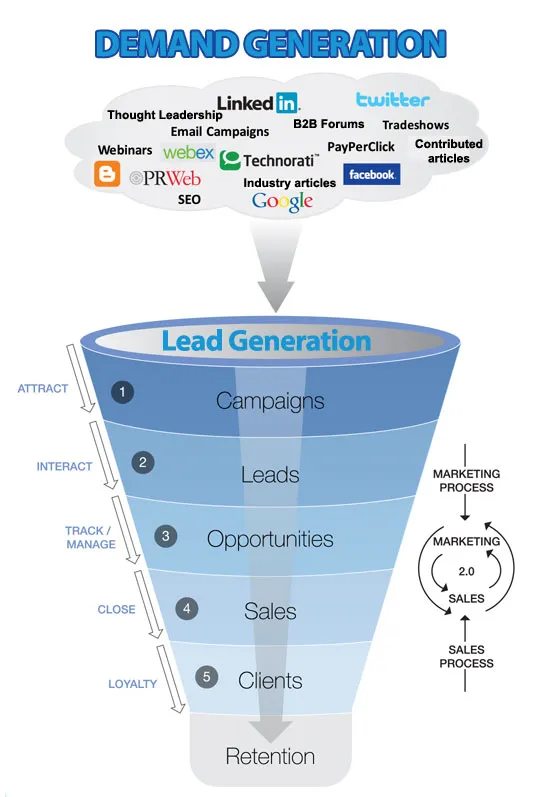
According to a recent Hubspot survey, 74% of companies that don’t exceed revenue goals are ignorant of the number of their visitors, leads, MQLs or sales opportunities.
No surprise here, shooting in the dark is asking to fail. Before you can target effectively, you have to know who you’re working with. What type of demand generation tactics you employ will address areas in the customer journey needing direct attention.
Sales Metrics Overviews for Demand Generation
Email Subscriber: Email subscribers are a dime a dozen, which is hard to admit when we consider the effort we put into building email lists. Sad truth, most who agree to receive a newsletter are not leads, only prospects.
Segmentation ensures you can make email most relevant to your users. Try to segment leads from prospects by behaviors such as signup date, specific links or channels for signup, clickthroughs that don’t end in conversions and unresponsive users. Making emails easily sharable (and asking for shares within content) is a great way to increase demand while assessing lead quality.
Marketing Qualified Lead (MQL): Marketing qualified leads have expressed interest in your product or service and are no longer just prospects.
To be an MQL, the lead must meet the standards determined by your company. What constitutes an MQL will vary, so sales and marketing must agree upon their terminology and definition across all the touchpoints. What roles or job titles qualify leads? What types of industries? Company sizes?
Focusing on fit is a great way to go. For example, the CMO of a financial company with 5,000-10,000 employees is likely a great lead to target for your streamlining SaaS product. Someone who follows you on social media, but isn’t on LinkedIn, maybe not.
Be sure to attend to interest levels as well. If a prospect has downloaded numerous ebooks, engaged across social and is attending to the newsletter - that’s an MQL. However, someone who’s only peeked at your blog once and signed up for the newsletter may not be a true MQL.
If you’re not finding your leads after defining your ideal fit and interest, it’s time to reconvene the sales and marketing teams to either rehash their shared vocabulary or retool your content/engagement strategy.
Sales Qualified Lead (SQL): Sales qualified leads are gold once they’ve displayed buying behavior and been vetted. You can determine sales-worthiness by any number of acronyms, such as BANT: Budget, Authority, Need and Timeframe. Basically, is the lead ready, willing, able and solvent? Sales reps should be spending time with those most likely to buy your product or service. A quick call can qualify or disqualify.
Sales Opportunity: Also called sales qualified leads, sales opportunities are qualified as potential buyers because of high value and a high probability of closing. These individuals have displayed a high level of interest, fit or need for your product or service.
Opportunity Won: Honest and valuable relations lead to sales. But just because you’ve won the opportunity, doesn’t mean it’s time to close up shop. Retaining customers means sending email newsletters, loyalty program offers, discounts and event invites. Continuing engagement can translate into upsells, referrals and valuable feedback from surveys.
Why Should You Start Lead Scoring?
(Source)
Lead scoring helps you target the best leads already in your funnel and optimize your demand generation strategy. Job position, number of social media followers, company size and engagement level are essential criteria for ranking leads. You’ll want to spend your resources talking with decision makers, so hand your sales team a hierarchy of leads to pursue instead of opting for the A-Z technique.
With lead scoring in place, sales teams touch upon the hottest leads for improved sales, increased productivity and higher morale. Lead scoring technologies are plentiful, from Marketo, Eloqua, Hubspot, IKO-System and more.
Lead Nurturing
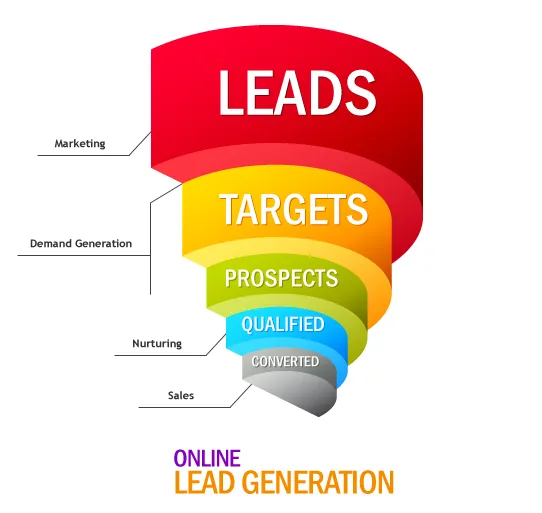
(Source)
79% of all marketing leads never convert into sales, says Hubspot. The reason? A lack of lead nurturing.
If you’re actively developing and maintaining relationships with prospects through every stage of the sales funnel, you’re already a lead nurturer.
Guide leads along the buyer’s journey in a way that seems intuitive, so when users wonder about a particular aspect of your brand - poof! - it appears around the next corner like magic.
Lead activity reveals how close prospects are to a buying decision. Website visits, retweets and downloads are the markers of a well-nurtured lead. As we'll discuss soon, a multichannel strategy is a must for proper lead nurturing.
Leads arrive in one of these four types, which can obviously change:
Good Fit and Interested: Winning! These leads are highly engaged, a good fit and warrant immediate follow-up from the sales team. Studies show that under 5 minutes is best and under 24 hours is passable.
Good Fit and Less Interested: Second best, these leads don’t show much interest,yet are a good fit for your brand. Maybe they downloaded a piece of content or signed up for a newsletter, but they still need to be nurtured further.
Not a Good Fit, but Interested: Subscribing to your newsletter or downloading an ebook doesn't make someone your ideal customer. That said, it’s worth having a sales rep do a low-cost follow-up with such individuals to see if they may be in line for a quick, though unusual, sale.
No Fit and No Interest: These leads are best tossed from the communication stream and can only confuse you.
Lead Nurturing for Better Demand Generation
When setting out to find more demand, don’t forget those who have already shown you interest. It’s a much smaller and easier investment to inspire your existing audience to look at you in a new way.
Bottom line: a poor lead nurturing strategy will waste valuable leads.
A demand generation strategy must assess and segment leads that aren’t ready to buy and keep their interest for the future.
Lead nurturing is about organizing leads into segmented lists for more precise and effective email marketing campaigns. This way, you can facilitate demand generation throughout the life of a prospect.
List segmentation assesses these important factors:
- Product line fit
- Company size
- Web behavior
- Email click integration
- Job roles
Likewise, metrics such as web page views, content downloads, and site visits will inform which content will be the strongest choice to approach leads with.
Prioritize these factors and set about to test them. This way your messaging will target segmented leads most effectively.
Take Marketo for example. As a lead nurturing solution, Marketo breaks every email sequence down by time, follow-up, type of content, and frequency. This way, leads are being nurtured in a personalized fashion to ensure a personalized response, every time.
Lead Scoring for Better Demand Generation
To settle upon what defines an MQL, marketing and sales departments should collaborate and determine demographics, activities and behaviors that make a lead qualified for your company. A lead scoring system you establish will then allow you to rank your leads based upon their scoring.
Here we have Pardot’s lead scoring overview. It takes into account metrics such as buying authority, company size, interactions with your company, and companies within your market territory. This shows us how important it is to address the different factors leading to the quality of different leads.
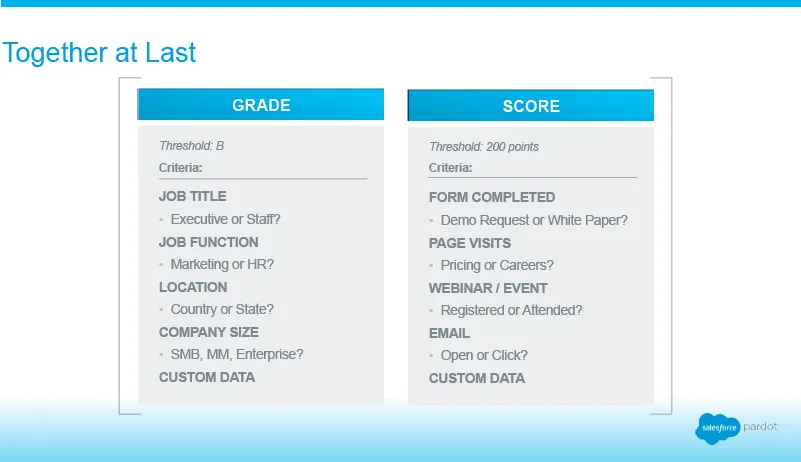
(Source)
Incorporating lead scoring into your demand generation strategy can help you target the best leads already in your funnel. With lead scoring in place, sales teams touch upon the hottest leads for improved sales, increased productivity - and higher morale.
9 Techniques for Better Demand Generation
Reaching your ideal leads requires a far-reaching multichannel approach. Why? Because your leads are all at different stages of the buying journey. Try your hand at the five following campaigns to reach consumers at the right time and place.
#1 Display Retargeting - Pardot
(Source)
“80% of the traffic on your web site is not from people who will necessarily buy anything. The challenge is engaging with those visitors who are interested in your product but are still in the evaluation process.”
--Chris Golec, CEO of Demandbase
Most sales happen after the seventh try, right? Well, same goes for the internet.
Retargeting is a cost-effective way to keep your brand in front of decision makers throughout what is a usually a lengthy buying cycle. By repeatedly positioning your brand in front of qualified leads, you can expect your revenues to increase.
Pardot’s retargeting efforts speak directly to the executive looking to boost their sales pipeline. The use of the alluring word “Accelerate” nabs our attention and continues on to recommend the brand’s marketing automation solution. The messaging here is pinpoint and actionable, especially when we look to the bright and optimistic “View Demo” CTA. The eye tracks right here and the top-right managed display placement is well executed.
David Raab of Customer Experience Matrix shares insights on demand and marketing automation softwares here.
#2 Sponsored Research - Hubspot
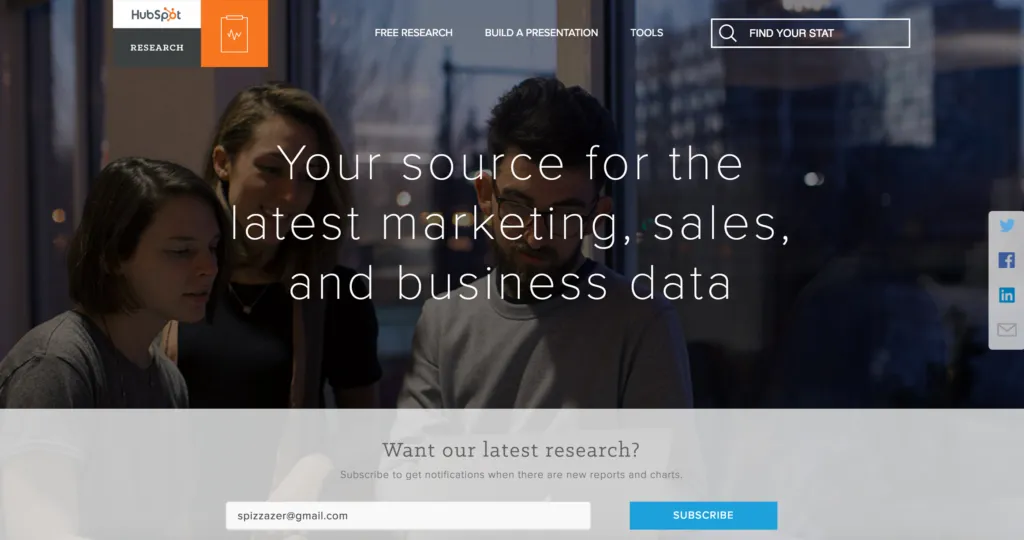
(Source)
3,233,457. That’s how many blog posts have been written today.
If you’re serious about deserving attention for your content marketing efforts, it’s time to consider and budget for content that will differentiate your brand. Best case, you position yourself as thought leaders.
That means next-level evergreen content or sponsored research setting you apart from the competition.
Hubspot takes this idea to the next level with their Hubspot Research webpage. Having conducted and released so much valuable content through the years, the company decided to consolidate their assets and take demand and lead generation to new heights. Subscribers here are better segmented and more easily turned into buyers than off the main site.
Carlos Hidalgo of Annuitas shares some insights gleaned from CMI’s 2017 B2B Content Marketing Survey:
- Only 22% think their organization's approach to content marketing is very or extremely successful.
- Only 28% of respondents think their organizations are sophisticated/mature with content marketing efforts.
- Only 34% think their organizations are very effective at meeting their content marketing goals.
This means you have a wide open lane to excel with killer content!
#3 Provide A Free Resource
This is a very effective way to move forward with a lead generation strategy, for both MQLs and SQLs. Not only will it cement your position as a thought leader, but it will engage leads across a diverse spectrum.
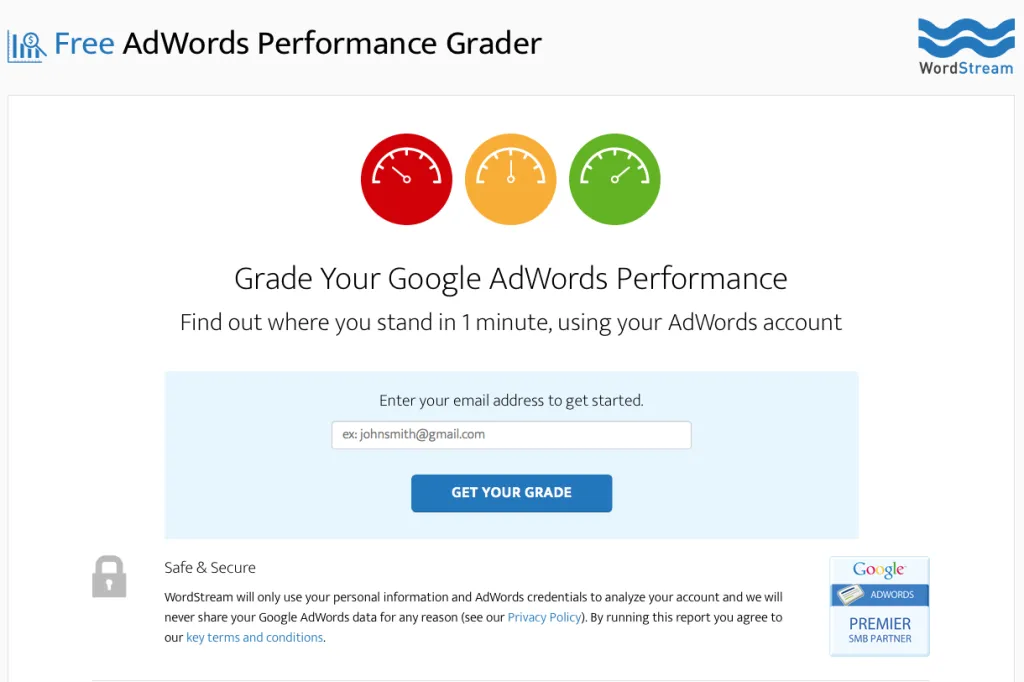
Wordstream launched their Adwords Performance Grader to do just this. As a strong demand generation tool, the software also creates deep and lasting value to their target demographics.
While funding such a resource is not cheap, the position gained by being associated with this process pays hugely in terms of advertising and inbound marketing potential.
Hubspot did something similar when it launched their free infographic templates:
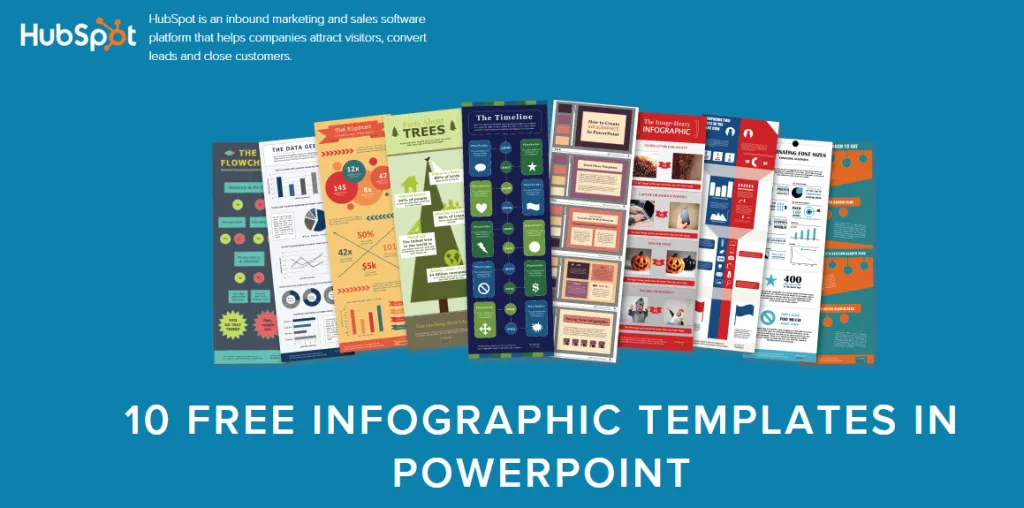
By giving away great materials, essentially content upgrades, the company cements a great deal of trust with their leads. While certain assets could be lucrative, giving away resources like this creates heaps of goodwill and brand ambassadorship. Plus, it has huge impacts on sales opportunities later.
#4 Video Advertising - Box
(Source)
“To maintain a dialogue with buyers and move buyers along as much as possible before they interact with sales, you’re going to need to cover content that helps them at least prepare for a buying decision.”
--Adam Needles, Annuitas
Video is a quick, retentive, and interesting way to share information about your brand. It’s also great advertising for engaged, bottom-funnel leads. You’ll get an SEO boost by tagging videos, better-converting landing pages, longer site times and content ideal for social media sharing.
This video from file sharing app Box shows viewers exactly the benefits awaiting them at use. The company uses a bright voiceover to illustrate what the value can be to their organization, highlighting all the features in a bulleted-list format from one screen to the next. This video makes it easy for prospective clients to buyers with valuable information - fast.
#5 Partner Webinars - Wordstream and Moz
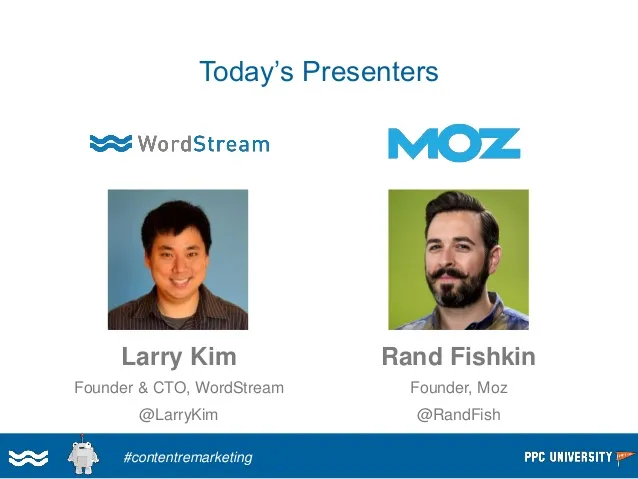
With all the values we just mentioned in video ads, webinars are beacons of demand generation. Why? Because people always crave the latest insights, especially from celebrity figures.
This Wordstream and Moz partnership exemplifies all the good that comes from demand generation via webinars. You can ally with industry influencers, boost brand awareness for top-funnel leads, differentiate yourself for bottom-funnel leads and overall showcase your brand as top-notch. Come out ready to share your best ideas and prepare to win lots of leads for the effort.
#6 Syndicated Content
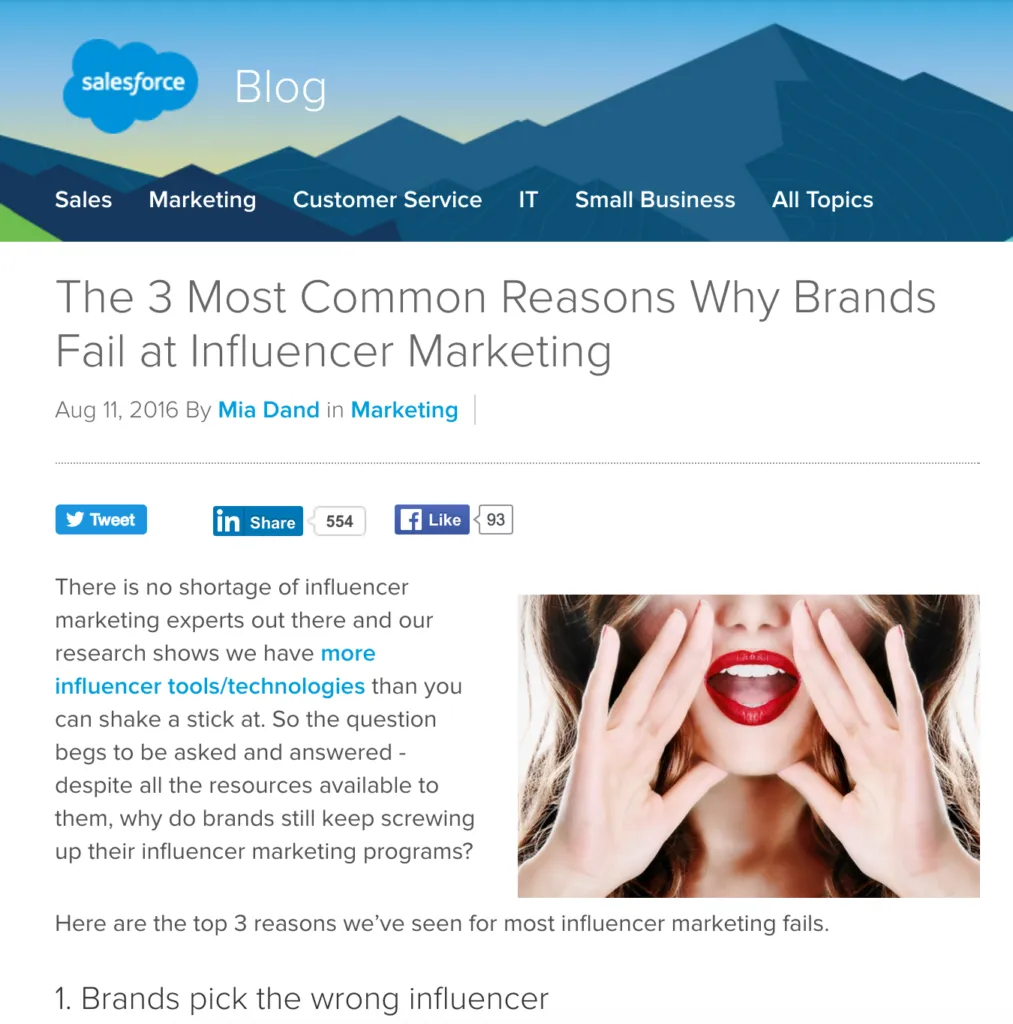
(Source)
Ever feel like you keep running across the same piece of content and the same ideas? You’re not crazy, it’s just syndicated content hard at work. Yes, partnering with third-party media channels to distribute your content can bring you loads of brand awareness.
I swear, this Salesforce blog post is everywhere these days! I ran a search and found their ideas had swarmed around the SERP rankings - and good for them! By distributing their ideas readily, they catch the linkbacks to their landing pages or homesite blog content. Even if other brands bite their content, better for Salesforce because they’re now seen as thought leaders even more. Guaranteed that Salesforce is tracking the leads that arrive and segmenting their users by engagement and channels. This demand generation tactic is great for building awareness but can also be used with bottom-funnel content to trigger sales meetings.
#7 Use Display Retargeting
Remarketing not only increases conversions but is also a powerful brand awareness tool. At Wordstream, they noticed that while attracting new traffic was going well, converting them was the problem. So they experimented with a display retargeting program and the graphic below highlights their results after implementing the campaign:
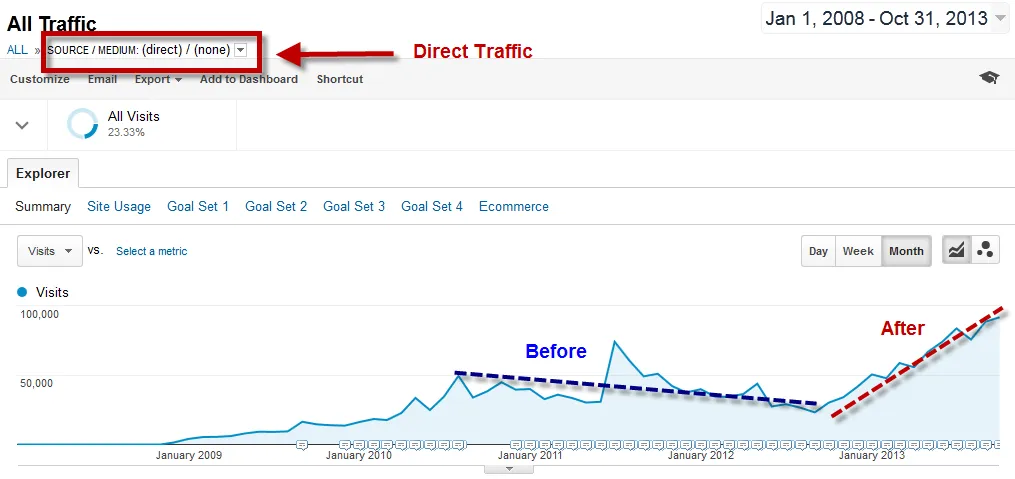
(Source)
Using their AdWords Performance Grader mentioned above, they saw an increase in repeat visitors by 50%, increased conversion rates by 51%, and a time-on-site increase of 300%.
Talk about boosting brand awareness in the right way.
#8 Check that marketers are aligned with your metrics
Marketer metrics (the number of raw leads provided) and your closed loop marketing metrics (MQL, SAL, SQL, opportunity impact) are not the same.
Take steps so that your goals are understood and met.
Before running into lead quality issues, be sure that the publisher knows that your continuing business will be based upon how they perform relative to your goals.
#9 Align topics with prospects entering your buying process
All leads are not created equal, yet the publisher charges a flat rate. The best way to drive the highest number of late-stage quality leads (possible of becoming MQLs) is to feature late-stage content in your syndication – buyer guides, webinar registrations, case studies, etc.
The publisher may say this will return fewer leads, but that’s good. This means you’ll acquire only the leads worth engaging.
Key Takeaways
Marketers, we must remember that ‘Build it and they will come thinking doesn’t work’. It’s time to invest in a real demand generation strategy, one that focuses on going the long haul with customers, not just new leads. Your brand needs to play strong all nine innings to win.
Selecting the right content is what allows campaign success, so find content that’s performed well and if need be, repurpose it. Choose evergreen or timely pieces to share. Create new content to fit the current pain points of your target persona.
What will resonate is what drives demand. Sharing the messaging through the appropriate channels is the next step, so think of syndicated content, videos, webinars or display ads for this.
You’ll want to keep track of your metrics, as always, to make sure you’re keeping your eye on the ball. If you ever doubt your demand generation tactics, just ask yourself:
What would I want from a brand like mine?
How would I want it pitched to me?
To learn more about designing a successful loyalty strategy in the digital economy, sign up for the Digital Loyalty Academy today. Free access for the first 700 students.

